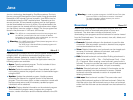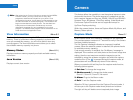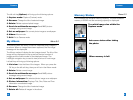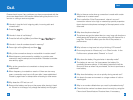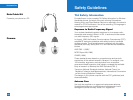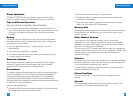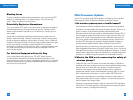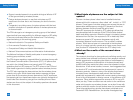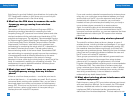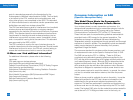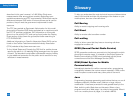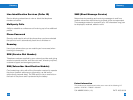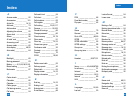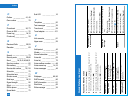
117
116
described in this user’s manual, is 0.482 W/kg. (Body-worn
measurements differ among phone models, depending upon
available accessories and FCC requirements.) While there may be
differences between SAR levels of various phones and at various
positions, they all meet the government requirement for safe
exposure.
The FCC has granted an Equipment Authorization for this model
phone with all reported SAR levels evaluated as in compliance with
the FCC RF emission guidelines. SAR information on this model
phone is on file with the FCC and can be found under the Display
Grant section of http://www.fcc.gov/oet/fccid after searching on
FCC ID BEJG4050.
Additional information on Specific Absorption Rates (SAR) can be
found on the Cellular Telecommunications Industry Association
(CTIA) website at http://www.wow-com.com
*In the United States and Canada, the SAR limit for mobile phones
used by the public is 1.6 watts/kg (W/kg) averaged over one gram
of tissue. The standard incorporates a substantial margin of safety
to give additional protection for the public and to account for any
variations in measurements.
To help you understand the main technical terms and abbreviations
used in this booklet and take full advantage of the feature on your
mobile phone, here are a few definitions.
Call Barring
Ability to restrict outgoing and incoming calls.
Call Divert
Ability to reroute calls to another number.
Call waiting
Ability to inform users that they have an incoming call when
engaged on another call.
GPRS (General Packet Radio Service)
GPRS guaranties continuous connection to the Internet for mobile
phone and computer users. It is based on the Global System for
Mobile Communication (GSM) circuit-switched cellular phone
connections and the Short Message Service (SMS).
GSM (Global System for Mobile
Communication)
International standard for cellular communication, guaranteeing
compatibility between the various network operators. GSM covers
most European countries and many other parts of the world.
Java
Programming language generating applications that can run on all
hardware platforms, whether small, medium or large, without
modification. It has been promoted for and geared heavily to the
Web, both for public Web sites and Intranets. When a Java
program runs from a Web page, it is called a Java applet. When it
is run on a mobile phone or pager, it is called a MIDlet.
Safety Guidelines
Glossary



